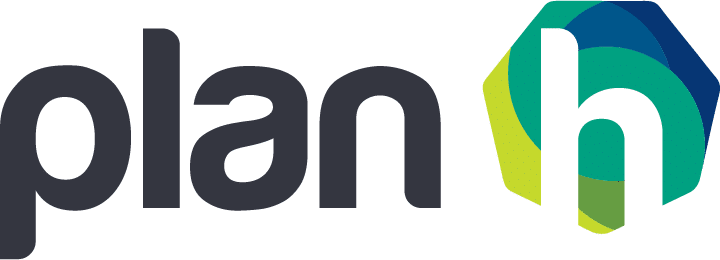Over 500 people in the Clayoquot Sound took the Vital Signs survey thanks to leadership from their community foundation. The result provides a data-driven picture of the region’s health and a tool for decision-making.
As residents of Tofino browsed the aisles of Tofino’s Co-op grocery store, Mayor Josie Osborne diligently handed the bustling shoppers a vital piece of paper. She was inviting people to take the Vital Signs survey – a key to helping the District of Tofino, and the region as a whole, to move forward with decisions that would have an incredible impact on the residents and visitors.
The grocery store was filled with families, seniors and youth from different backgrounds – the perfect setting to engage with locals in the Clayoquot Sound Biosphere Reserve Region’s Vital Signs report. Vital Signs is a report that brings together social, cultural, economic and environmental information to tell a story about the region.

“Time and time again we find that the west coast, our little area, is lumped in with data for Port Alberni or even mid island, so it’s just really hard to find the data at a scale that we want,” explained Rebecca Hurwitz, Executive Director of the CBT.
Learning from the Process
Before conducting the survey, they had a challenge. “Our population is so small [we] worry about confidentiality,” explained Hurwitz. “Because we are talking about such a small group of people, you could start to pick out the people you know”. Experts from the Social Planning and Research Council of BC (SPARC BC) were brought in to help refine the questions and reduce the risk of breaching privacy.
Once the survey questions were finalized, the communities used various methods to inform the residents about the regional survey; the Mayor of Tofino helped arrange the survey booth at the local grocery store, volunteers hand delivered the survey door-to-door, and community leaders promoted the survey in different communities and at different community events.
As the responses to surveys started to come in, the community began to realize a long-time wish; obtaining accurate and reliable local data that would provide insight about the quality of life their residents experienced. In 2012, the CBT joined 13 other community foundations to release their first Vital Signs report. In 2014, they issued the second Vital Signs report along with 27 other community foundations.
“This program and the data we received will help all of us…” — Aaron Rodgers, District of Tofino
“Whether it be trying to figure out [affordable, accessible] transportation options, how much water we have left, or how many people need a place to live – this program and the data we received will help all of us with those things.” said Aaron Rodgers, District of Tofino’s Manager of Community Sustainability.
Although their time frame was tight, the response from the community was tremendous with over 500 people participating in the survey. The first year of the Vital Signs survey was a success, and to keep this information current the CBT plans to conduct the survey every three years.
Connections Between Partners & Stakeholders

In addition, Dr. Paul Hasselback, Medical Health Officer of Island Health, encouraged the region to pursue the Vital Signs project. “[Dr. Hasselback] has a great presence in our region and often reports out to the municipalities,” Hurwitz said, “He was keen to hear that we were conducting a survey, and he’s very supportive of having Island Health data available at smaller population levels”.
Innovative Outcomes and Impacts
Before the survey was conducted, community issues were identified through observation but there were no regionally-specific concrete numbers to help make a strong case to focus resources on these needs. For example, youth were often seen hitchhiking across the west coast while many older adults had expressed the challenges of getting to medical appointments. Fresh food seemed expensive and sometimes scarce.

Not only has this helped the region to make the case to their councils, the statistics have helped to drive forward deeper conversations, obtain support and funding from various levels of government and granting organizations, and to actualize plans. Since publishing the Clayoquot Sound Biosphere Reserve Region’s Vital Signs Report, the community has held a Dialogue to Action: Accessible & Affordable Transportation in the Alberni-Clayoquot Regional District workshop which helped to further identify the key priorities and make commitments to actions.
The workshop helped put the spotlight on finding solutions for medical transportation. To address medical transportation, a non-profit organization called “Wheels For Wellness” from Campbell River was identified and is helping the region to find a practical solution. The region is currently assessing the feasibility of purchasing a vehicle and working on a plan to implement medical transport. Going forward, more attention will be focused on planning a youth regional transit program, as well as working on affordable housing solutions. Additionally, this research verified that healthy food items in the region cost 13%-21% more than in the nearby city and only two of eight communities have grocery stores with a wide selection of healthy foods. These discoveries support the work of Island Health and CBT’s Eat West Coast Network with a goal to help vulnerable individuals and communities in the CSBRR access safe, healthy, affordable food.
“This [Vital Signs Survey] is another brick in the building to create regional consciousness,” explained Rodgers.
The Vital Signs report has helped generate an incredible sense of community empowerment and the momentum needed to implement solutions to local issues.
Resources
- Vital Signs Canada
- Clayoquot Biosphere Reserve Region’s Vital Signs Survey
- Community Foundations Canada
- Community Health Data
More Information
Aaron Rodgers
Manager of Community Sustainability
District of Tofino
T: 250-725-3229 ext 22
E: arodgers@tofino.ca
Rebecca Hurwitz
Executive Director
Clayoquot Biosphere Trust
T: 250-725-2219
E: rebecca@clayoquotbiosphere.org




